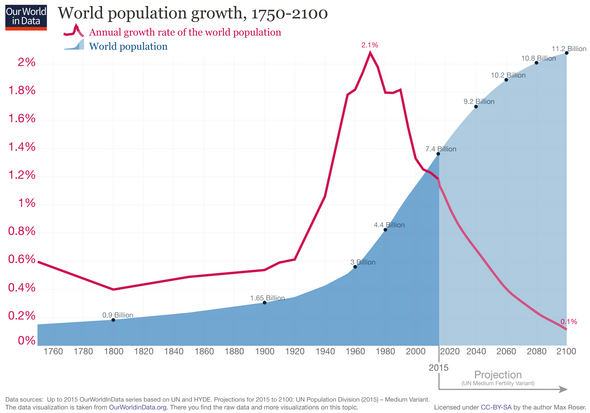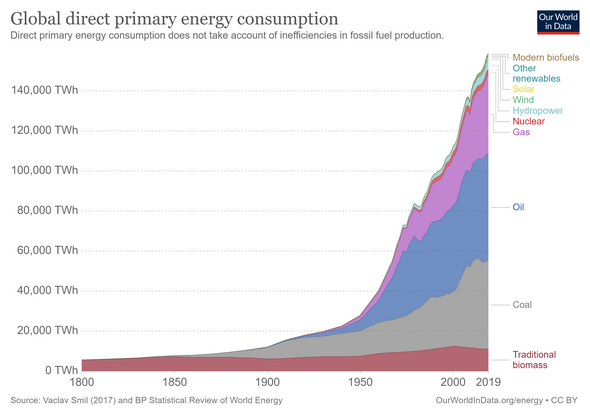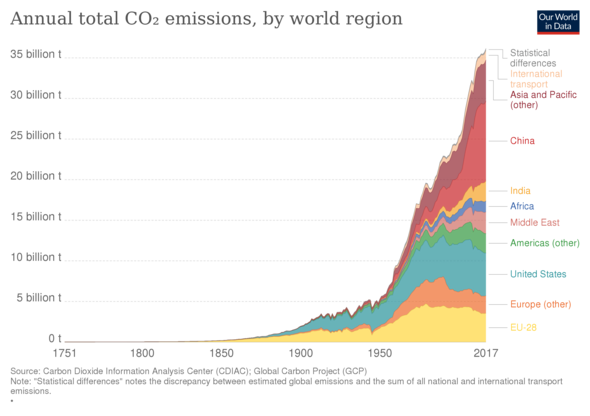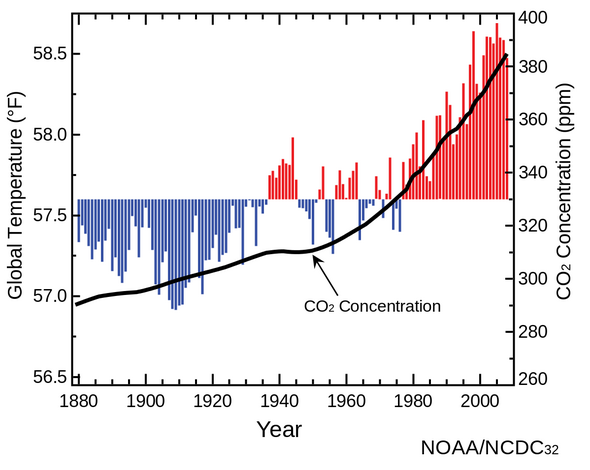Increase of CO2 Emissions
In the past 200 years the global population nearly increased by factor 10. While we had 1 billion people on earth up to the year 1800, we reached 2 billion in 1900, 4 billion in 1950 and 8 billion in 2000. Totally in line with this increase of the global population also the global primary energy consumption went up by a factor of 20 from the year 1800 till 2000, mainly based of CO2 emitting source like coal, crude oil and natural gas.
So it is not surprising that the global CO2 emissions also went up in the same way than the primary energy consumption and in line with the increase of the CO2 concentration, the global temperature went up in a similar way.
Due to a German share of global emissions in the range of only 2.5 %, it makes no sense to save as much as possible emissions in our country, because even if Germany will disappear from the globe as an industrialized nation, there will be no impact to the global climate change.
The only contribution of Germany can be to develop reliable, secure, economical and exportable solutions, which can be also used by other nations. Within our PhD programme in Power Engineering you will come in touch with BTU-Chairs researching on such solutions to contribute to the German transition of the energy system.
From the power engineering point of view, there are only a few technical options to reduce CO2 emissions in power generation:
- Reduce energy demand (increase energy efficiency)
- Use nuclear power for CO2 free generation
- Use coal or gas together with CO2 separation, storage and usage for chemical products
- Use renewable energies:
- Water
- Biomass
- Solar-Thermal energy
- Photovoltaic
- Wind Energy
In contrast to other countries, which will focus on CO2 free generation from nuclear power or coal fired generation with CO2 separation and utilization, Germany decided to move out of these both technologies. Due to a lag of hydro power and also biomass resources, the transition of the German power system is mainly based on highly fluctuating renewable resources from photovoltaic and wind energy.




